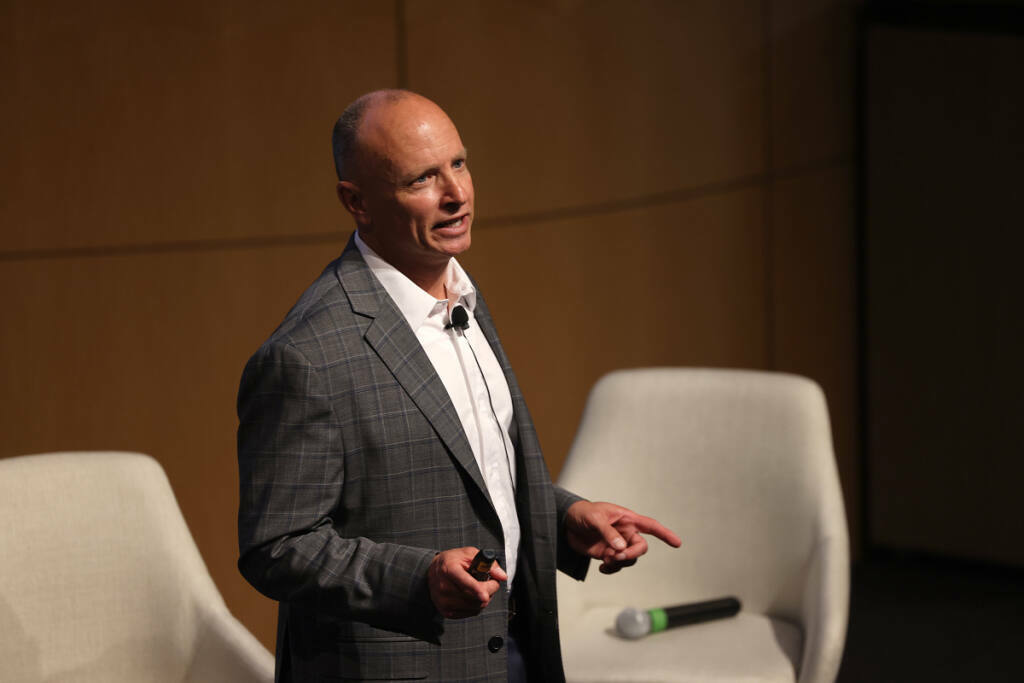
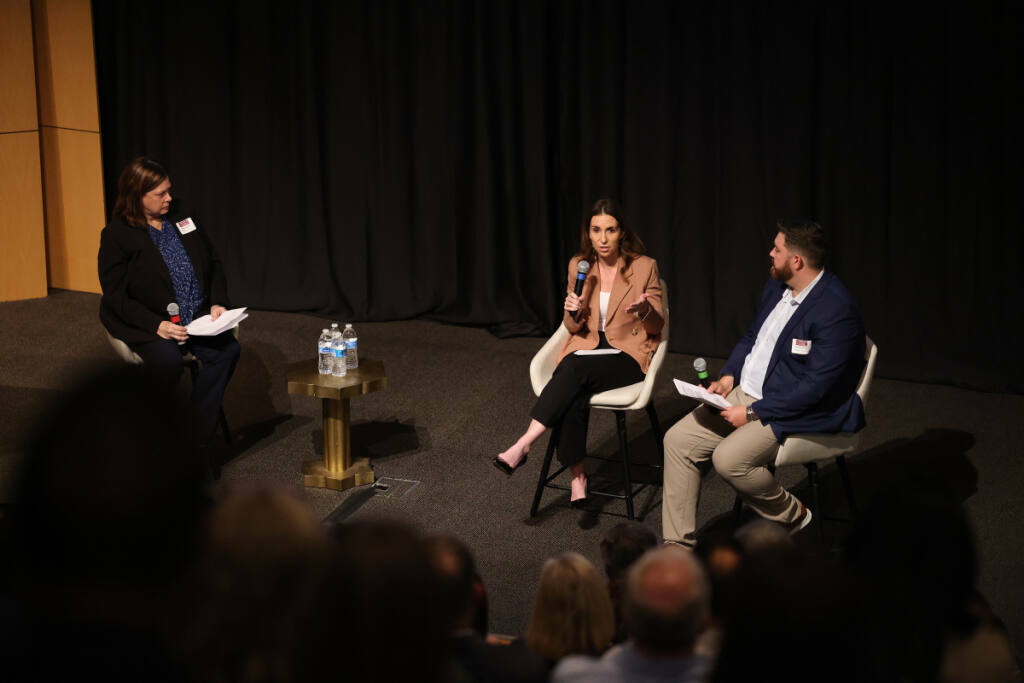
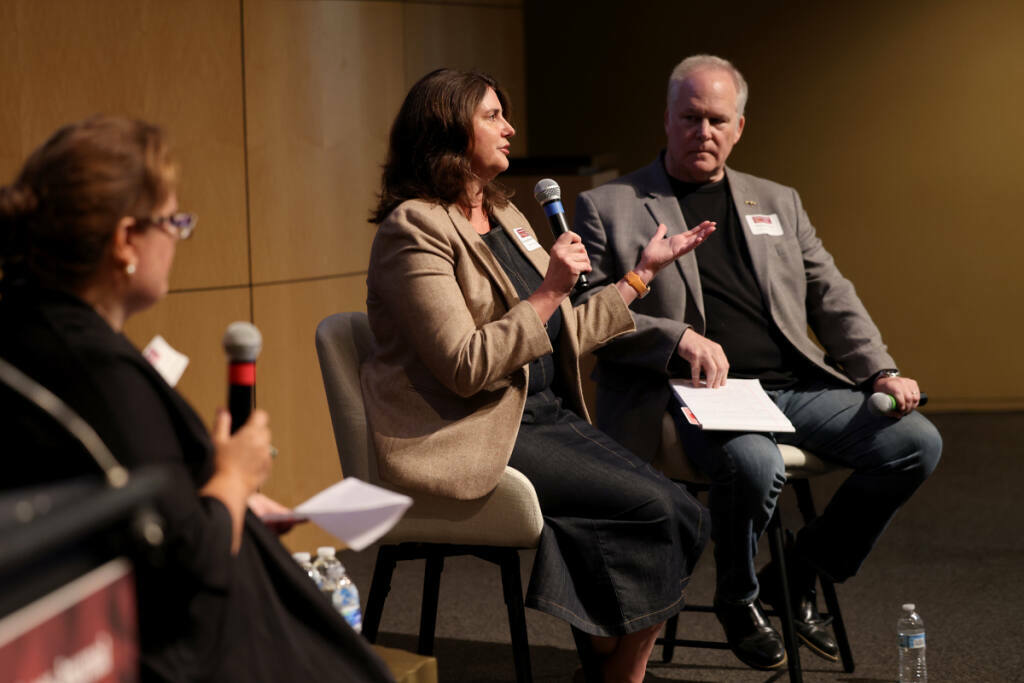
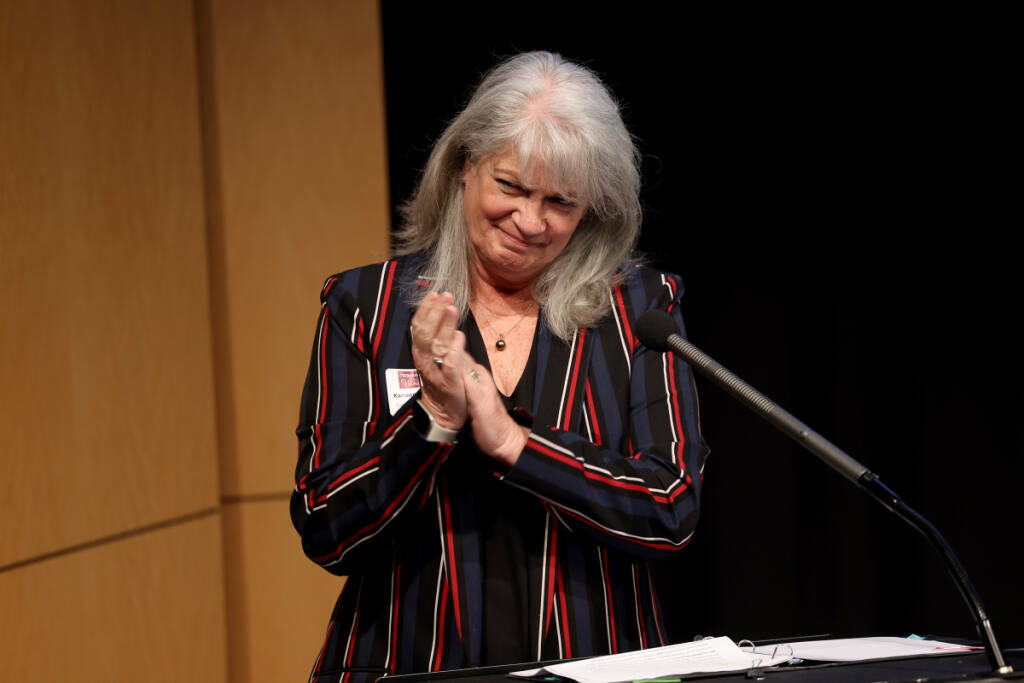
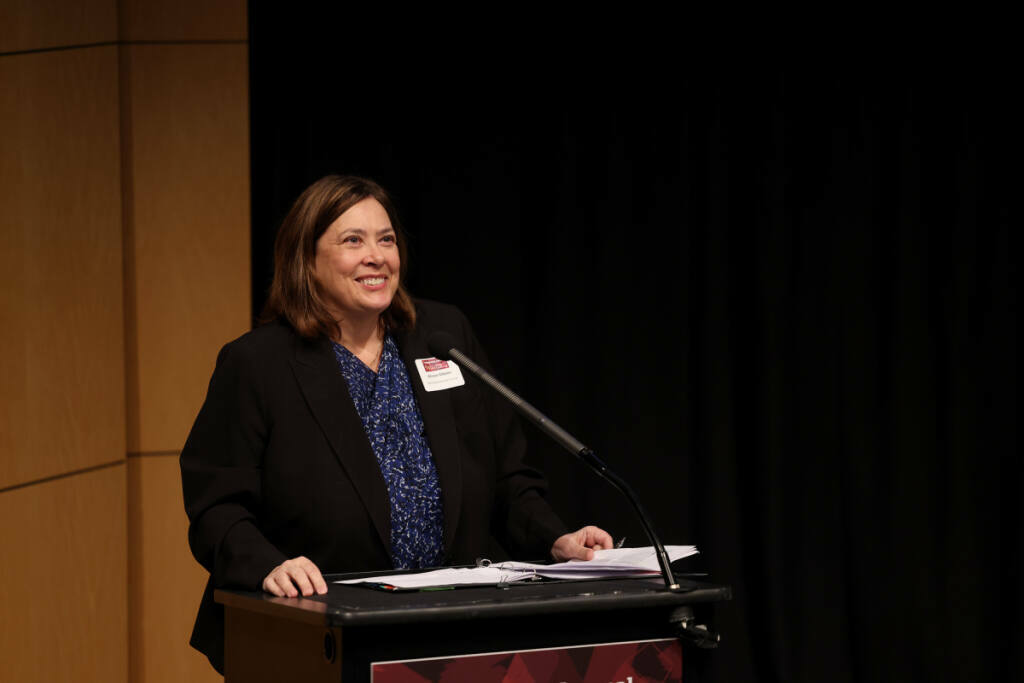
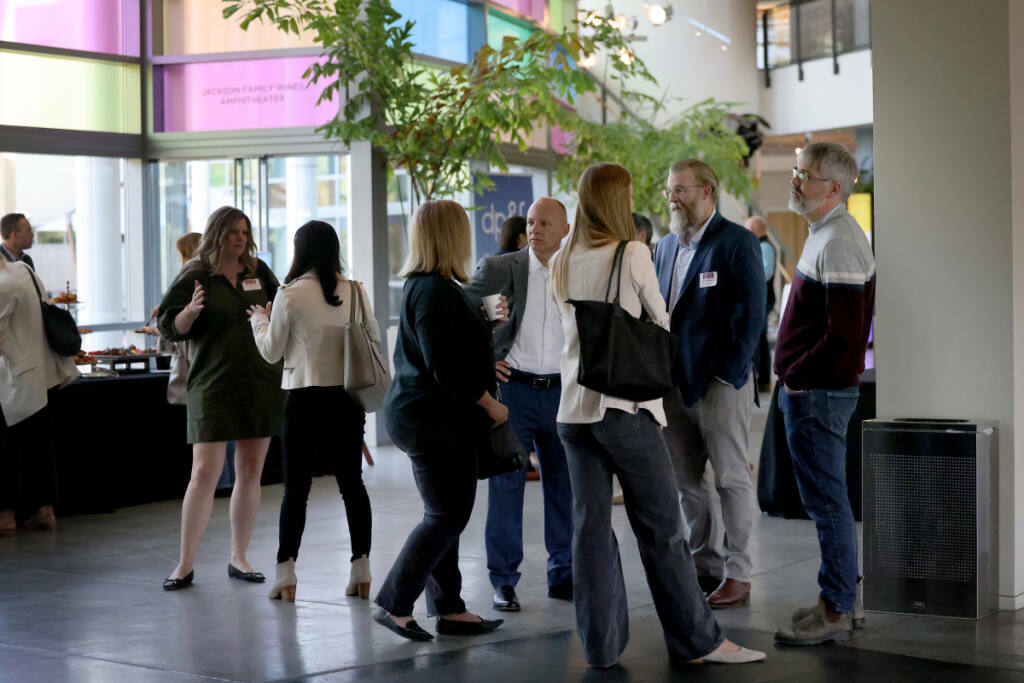
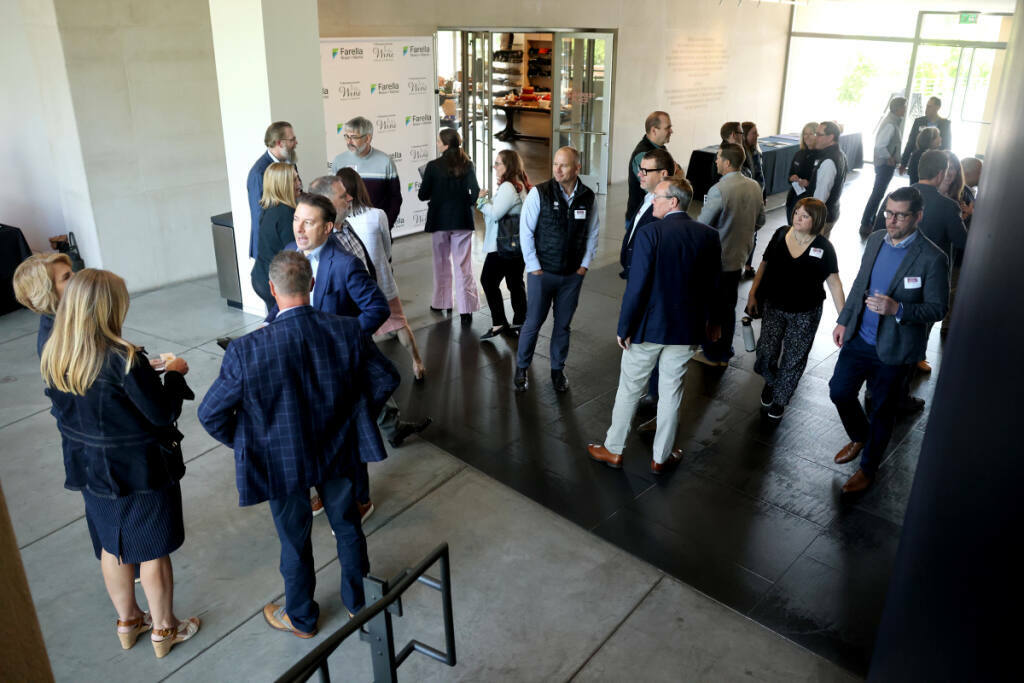
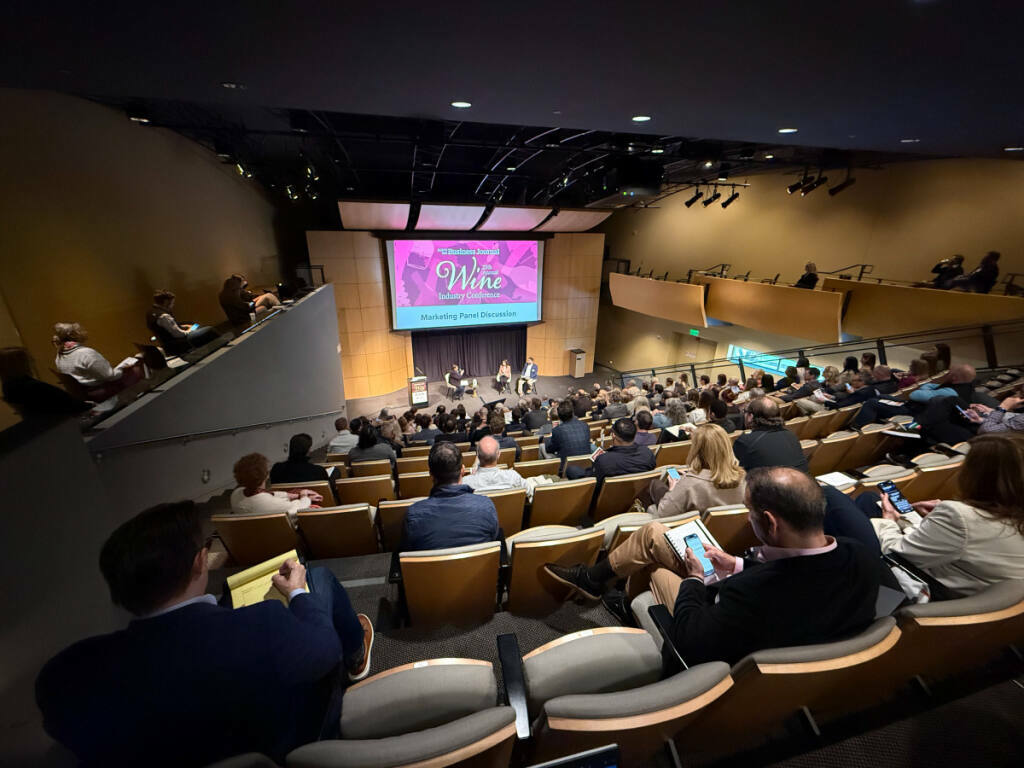
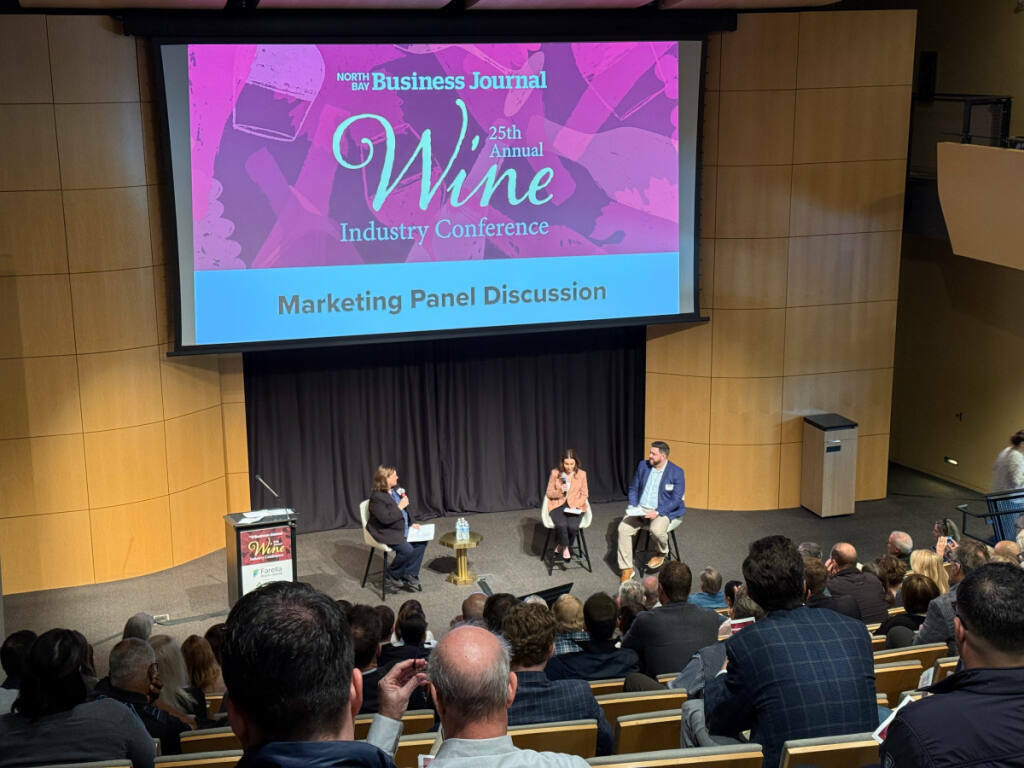
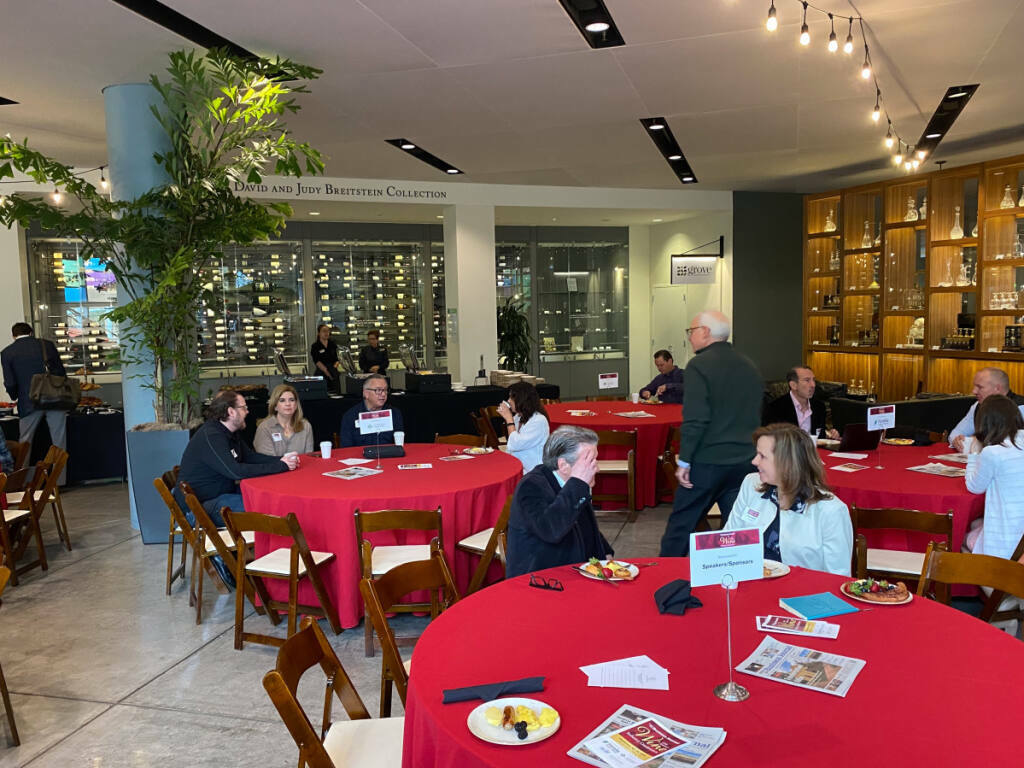
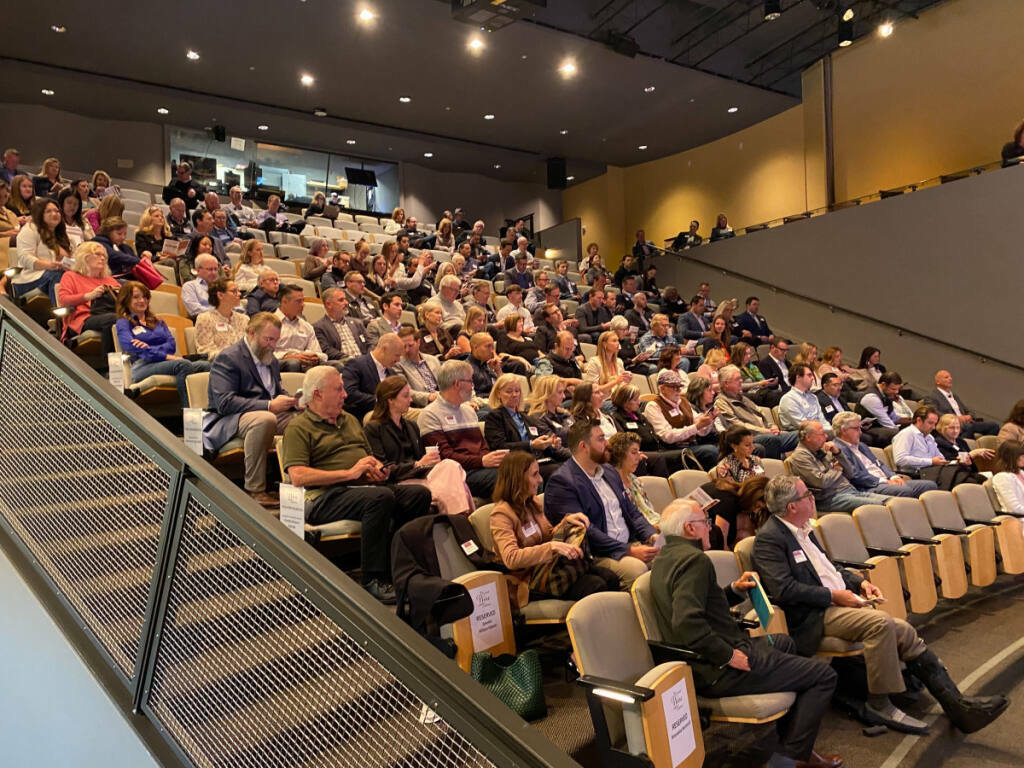

The wine industry stands at a critical juncture, confronting declining consumption, shifting consumer preferences and economic uncertainty. But industry leaders see opportunities for adaptation and growth through innovation and authentic consumer engagement, according to speakers at a conference in Napa on Wednesday.
North Bay Business Journal's 25th Wine Industry Conference provided a sobering assessment of current market conditions but also a road map for how the industry might navigate these challenges through innovation, authentic engagement and a renewed focus on the unique qualities that make wine special in a crowded beverage landscape.
Chris Bitter, wine economist for American AgCredit's Terrain economic research firm, presented a sobering assessment of the current wine market, showing that off-premise wine sales have fallen for four consecutive years, down 12% since 2019, with the decline being uneven across price tiers.
"At the low end, under $11, sales in volume terms are down by 20% since 2019, but the middle and upper tiers are still up substantially," Bitter told the audience at the CIA at Copia campus. "They're up by double digits."
This bifurcation in the market suggests structural challenges at the lower end while indicating some resilience in premium segments. Bitter noted that white wines have been performing better than red wines, with white wine sales down just 1% in 2024 versus a 5% decline for reds.
"Consumer preferences are shifting toward softer, crisper, fresher whites like Sauvignon Blanc and Pinot Gris," Bitter said. That could be a trend that wineries should watch in their production planning, he said.
Greater consumer demand for white wines over reds was noted in Silicon Valley Bank’s wine report, released in January.
Slower demand pressures grape sales, vineyard values
The direct-to-consumer channel, crucial for smaller wineries, is "still struggling mightily," according to Bitter. While DTC shipment volumes have declined below 2019 levels, sales are still up 22% in value terms, indicating bottle prices have risen 26%.
"Rising costs are deterring some visitors from traveling to Wine Country. And it's not just bottle prices, but tasting fees and travel costs," Bitter said.
This price sensitivity is particularly concerning for wineries dependent on tasting room traffic and wine club sign-ups.
The grape market faces significant oversupply issues, with Bitter revealing that several hundred thousand tons of wine grapes statewide were left unpicked last year due to lack of buyers.
Even the North Coast, traditionally more insulated from market fluctuations, isn't immune to these pressures.
"Even though the 2024 crop was small, we still didn't have enough demand to absorb all the grapes," Bitter said. "That's a clear sign that we have an oversupplied grape market, and in the end, more vineyards are probably going to need to be removed to kind of restore that balance between supply and demand, unless we have an upside surprise in wine sales."
Bitter provided a detailed assessment of North Coast vineyard valuations, drawing on American AgCredit's extensive appraisal team data. The picture he painted was concerning for property owners but potentially opportunistic for buyers.
"Vineyard values are now under pressure," Bitter stated. "As well as falling wine sales and a soft grape market, we also have rising costs to plant and farm and high interest rates. So all of those things are combining to put pressure on vineyard values in the North Coast."
His team's assessment revealed a significant market imbalance.
"In almost every area, we have more sellers than buyers," Bitter said. "There hasn't been much activity. There haven't been many deals that are actually being done, but we have enough evidence at this point for appraisers to say that values have declined throughout much of the North Coast."
The exceptions to this trend are primarily in Napa Valley's prime areas and, to a lesser extent, secondary areas, as well as the Anderson Valley appellation in Mendocino County, which have shown more resilience in property values.
Overarching industry challenges
Bitter identified two fundamental challenges facing the wine industry that go beyond short-term market fluctuations:
First, Americans are drinking less alcohol overall.
"The share of people who think that moderate alcohol consumption is bad for your health went from 28% to 46% between 2018 and 2024," Bitter said. "65% of young adults today think that even moderate alcohol consumption is bad for health."
He attributed this partly to a "growing awareness and focus on health and wellness in society overall" and partly to a "well-funded and sophisticated Neo-prohibition movement that is making what I think is the dubious claim that no level of alcohol consumption is safe."
Second, wine is not taking market share from other beverages.
"After growing for a couple decades, wine's market share peaked in the mid-2010s and has been slowing or falling over the last five years or so," Bitter said.
This trend reflects intensifying competition from canned cocktails and hard seltzers, as well as generational shifts in consumer preferences.
Economic context
Bitter placed these wine industry challenges within the broader economic context, noting that "economic uncertainty is nearing record territory. It's only been higher at one point in time, and that was at the very beginning of the pandemic."
This economic uncertainty compounds the challenges facing the wine industry, as consumers become more cautious with discretionary spending. However, Bitter suggested that the premium and luxury segments of the market are somewhat protected from these pressures.
"I do believe the premium and luxury segments of the market are insulated from these headwinds, at least to some extent," Bitter said. "If people are drinking less, I think they're also apt to be drinking better when they do drink. So that bodes well for premium and luxury wines."
Outlook for 2025
Looking ahead to 2025, Bitter predicted continued challenges but with some potential for stabilization in premium segments.
"Given that we have this imbalance between supply and demand, we're going to see prices come down in 2025 in the North Coast," Bitter said about grape prices.
He noted that white varieties, particularly Sauvignon Blanc, would likely fare better than reds like Cabernet Sauvignon and Pinot Noir, which are facing excess supply.
For the broader wine market, Bitter suggested that 2025 would be a year of adjustment rather than recovery.
"I think once we see things stabilize, we're not going back to the rates of growth that we saw prior to the pandemic," he said. "I'm still optimistic about these segments, but I don't think we're going to be close to those heavy growth rates that we had in the mid to late 2010s."
Despite these challenges, Bitter expressed cautious optimism.
"I do firmly believe that if we're willing to adapt to an evolving consumer in the wine market landscape, that in the end, we still have a bright future, particularly here for the North Coast wine industry," Bitter said.
Engaging the next generation
Stacey Dolan Capitani, vice president of marketing for Napa Valley Vintners, shared this optimism about the future, particularly regarding the next generation of wine consumers.
"I'm very optimistic about what is ahead with this next generation," Dolan Capitani said. "Yes, they have lots of choices. Yes, maybe wine is not their number one choice right now, but I really think that the future is in that next generation."
Dolan Capitani outlined three key areas that Napa Valley Vintners is focusing on based on feedback from their 250 member wineries: promoting positive perceptions of wine, creating new opportunities to meet consumers and trade, and reaching the next generation of wine consumers.
"The best news is they are prime wine consumers in the making," Dolan Capitani said of younger generations. "They believe in family-run businesses. They believe in farming. They want to know where their foods come from. They love social occasions."
Michael Haney, executive director of Sonoma County Vintners, highlighted their "Wine is Us" campaign, which focuses on developing a positive narrative about wine and its benefits. The organization conducts over 48 consumer-facing events annually and supports over 400 nonprofits through their charitable foundation.
Creating shareable experiences
Marketing experts at the conference emphasized the importance of engaging younger consumers through authentic experiences and digital innovation, with a particular focus on creating "Instagrammable moments" that encourage social media sharing.
Alexis Traverso, director of digital marketing at Far Niente Wine Estates, discussed how they're rethinking experiences to cater to younger consumers, including the opening of Bella Union Winery specifically designed with social media-friendly spaces.
"We're creating experiences that naturally encourage sharing," Traverso explained. "It's not about forcing it, but designing spaces and moments that people want to capture and share with their networks."
Here are examples speakers noted of such moments:
1. Design: Far Niente created visually striking architectural features and backdrops at Bella Union specifically designed to be photographed and shared on social media.
2. Wellness: Haney has heard of his members’ incorporating wellness practices, such as yoga classes or “forest bathing,” to craft a unique blend of nature immersion and wine appreciation that appeals to experience-seeking younger consumers.
3. Behind-the-scenes access: Traverso noted that their behind-the-scenes posts consistently do well: "Behind-the-scenes posts perform well on social media, resonating with consumers who want authenticity and a peek into the real world of winemaking."
4. Library wine tastings: Special events featuring older vintages create unique experiences that younger consumers can't get elsewhere and want to document, according to Luke Ammerman, marketing director for 8,000-case-a-year Papapietro Perry Winery in Sonoma County’s Dry Creek Valley near Healdsburg.
Ammerman said transparency and authenticity are key.
"We emphasize the importance of transparency and showing behind-the-scenes aspects of the winery to build trust with consumers," he said.
Sustainability and consumer trust
Both marketing experts agreed on the importance of sustainability in wine production and marketing, but cautioned that the efforts should line up with consumer values.
"Sustainability should be aligned with consumer values and not just a marketing claim," Traverso explained. "Consumers can detect inauthenticity very quickly."
Ammerman shared examples of how his winery showcases sustainability efforts through partnerships and transparency: "We partner with local environmental organizations and show our actual practices rather than just making claims."
Need for unified messaging
When asked about the possibility of unified messaging campaigns across different wine organizations, Dolan Capitani mentioned that the Wine Institute is taking the lead in this effort.
"They've been doing a tremendous amount of research into what is that right messaging," Dolan Capitani said. "They're in that position to also bring in Oregon and Washington. So that's like a kind of a United States wine campaign."
This collaborative approach could help address one of Bitter's concerns about the industry's ability to counter negative messaging about alcohol consumption.
‘Wine still has a lot going for it’
Bitter outlined several strategies for the wine industry to address its challenges:
1. Wine as a health-conscious choice: "Wine needs to try to position itself as the most sensible choice among alcoholic beverages for those that are concerned with health and wellness."
2. Younger and diverse consumers: "We need to be more intentional at connecting with younger consumers and multicultural consumers, and we have to do that on their terms."
3. Compelling products: "We need to deliver more compelling products that dovetail with shifting consumer preferences."
4. Accessible experiences: "We have to continue to find ways to provide accessible and affordable tasting experiences to consumers."
"Wine still has a lot going for it," Bitter said. "It really could be the beverage of choice for younger generations. It has a lot of what they're actually looking for. So what we need to do as an industry, if we want to ensure that wine continues to thrive in the future, is we have to focus on turning these challenges that I've just talked about into opportunities."
Ammerman suggested modernizing and streamlining shipping logistics to meet younger consumers' expectations, while Traverso emphasized the need to address political funding and the anti-alcohol movement.
Jeff Quackenbush covers wine, construction and real estate. Reach him at jquackenbush@busjrnl.com or 707-521-4256.

